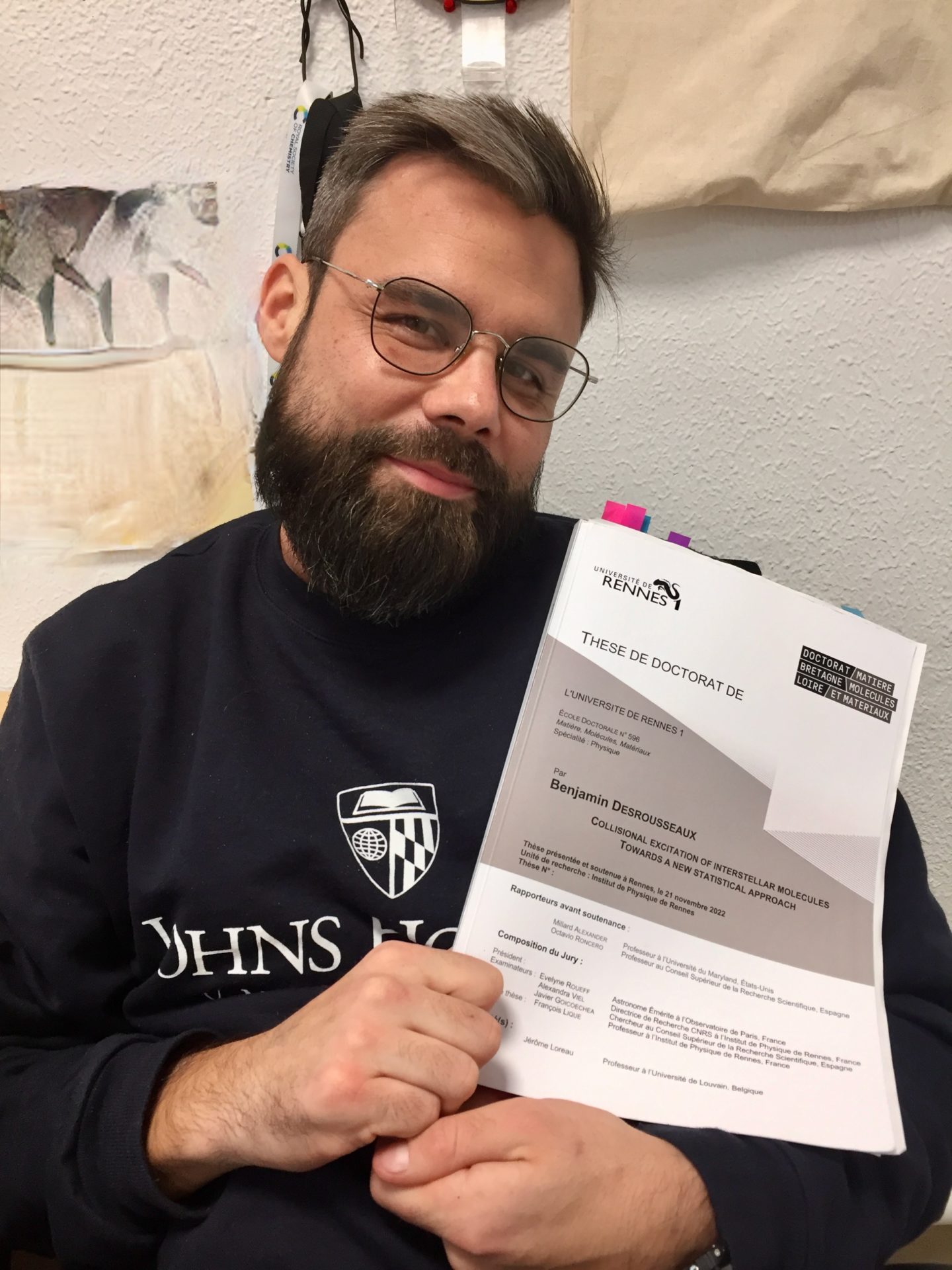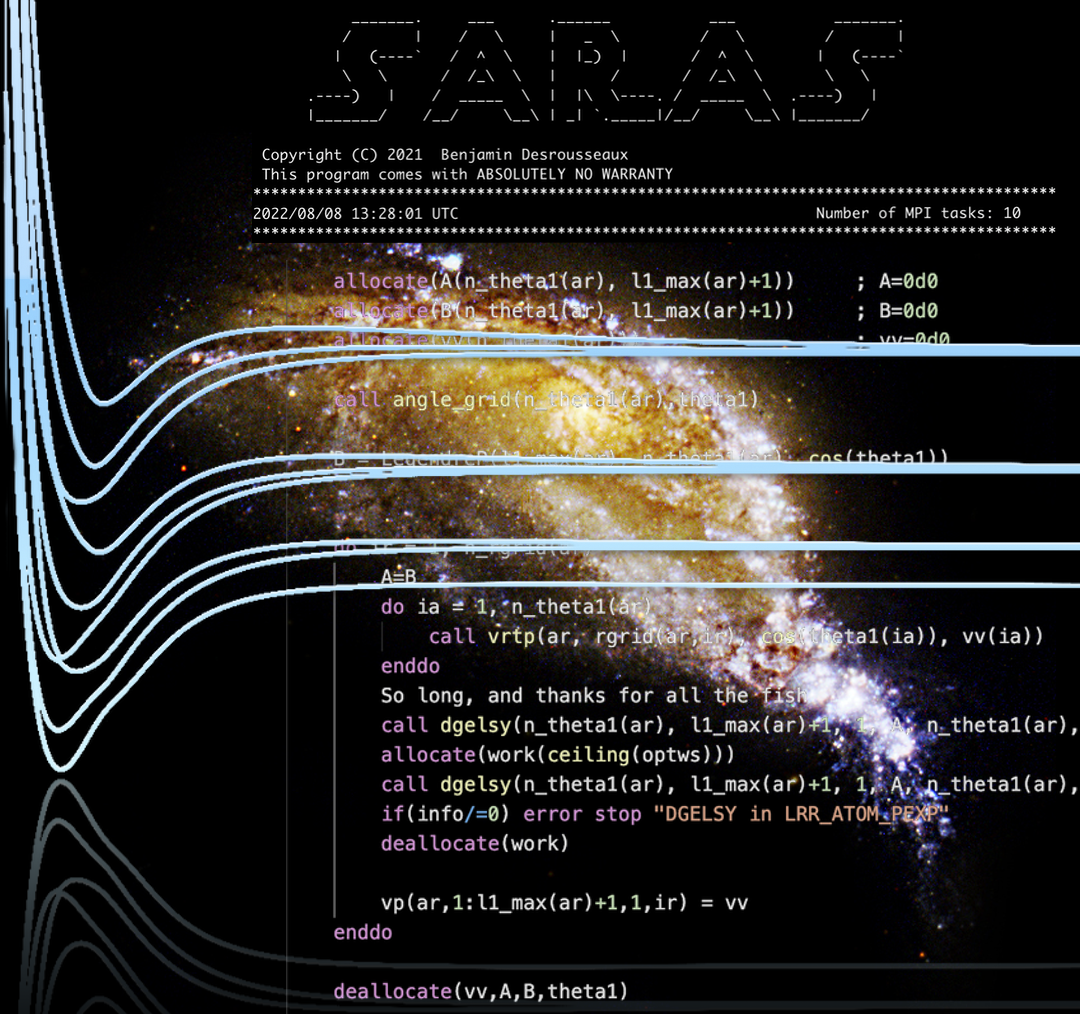by Benjamin Desrousseaux, on
Benjamin Desrousseaux thesis

All the Collexism team is very proud and happy to announce that Benjamin is now a PhD, and the first one graduating within the ERC project.
Benjamin's thesis started in October 2019 under the supervision of F. Lique, and ended on Monday November 21st.
The president of his jury was Alexandra Viel, CNRS research director at l'Institut de Physique de Rennes (IPR), France.
The examiners were:
- Evelyne Roueff, Astronomer emeritus at l'Observatoire de Paris, France
- Javier Goicoechea, Researcher at the Superior Council of Scientific Research, Spain
The rapporteurs were:
- Millard Alexander, professor at the Maryland University, USA.
- Octavio Roncero, professor at the Superior Council of Scientific Research, Spain
Jérome Loreau was invited to the defense.
Thesis work
During his thesis, Benjamin Desrousseaux worked on several reactive and non-reactive collisional systems, including PN-H2, HeH+-H, HD-H, HD-H+.
He also co-developed a new statistical theory based on the Statistical Adiabatic Channel Method (SACM). To support this new method, he developed an highly paralyzed code from scratch, named the SARAS code (Statistical Adiabatic method for Reactive Astrophysical System).
He also co-developed the 5th (and new) version of HIBRIDON, a scattering code for atomic and molecular collisions.
He published 8 scientific per-reviewed papers during the 3 years of his thesis, including 6 as the first author.
He is also a valued member of the Collexism team, always curious to know what others are doing and how. Most of all, always willing to help his co-workers. He will stay among the team up to April 2023, and then, he will quit the nest and fly with his own wings ...

Collisional excitation of interstellar molecules: Towards a new statistical approach - B. Desrousseaux

Abstract of the manuscript:
Our main knowledge about interstellar environments relies on molecular spectra. In such environments, the density is usually low and the frequency of collisions not large enough to maintain a local thermodynamic equilibrium. It is then necessary to take into account both collisional and radiative processes in order to properly interpret molecular spectra.
State-to-state rate coefficients describing the collisional (de)excitation of interstellar species with the main collisional partners (H2, H, He) are then essential.
Full quantum time-independent close-coupling calculations is the method of choice to obtain accurate collisional rate coefficients at typically low interstellar temperatures (< 100 K). However, in the case of reactive or heavy collisional systems, this method is impractical due to its memory and CPU requirements. As a result, reliable collisional data is missing for many detected molecules of key importance in astrochemistry.
Exploring those limits, new rate coefficients were computed for six collisional systems: PN—H2, CF+—H2, HF—H, HD—H, HeH+—H, and HD—H+. In parallel, I contributed to the development of a new statistical approach overcoming the current limitations and developed an open-source code implementing this promising approach.